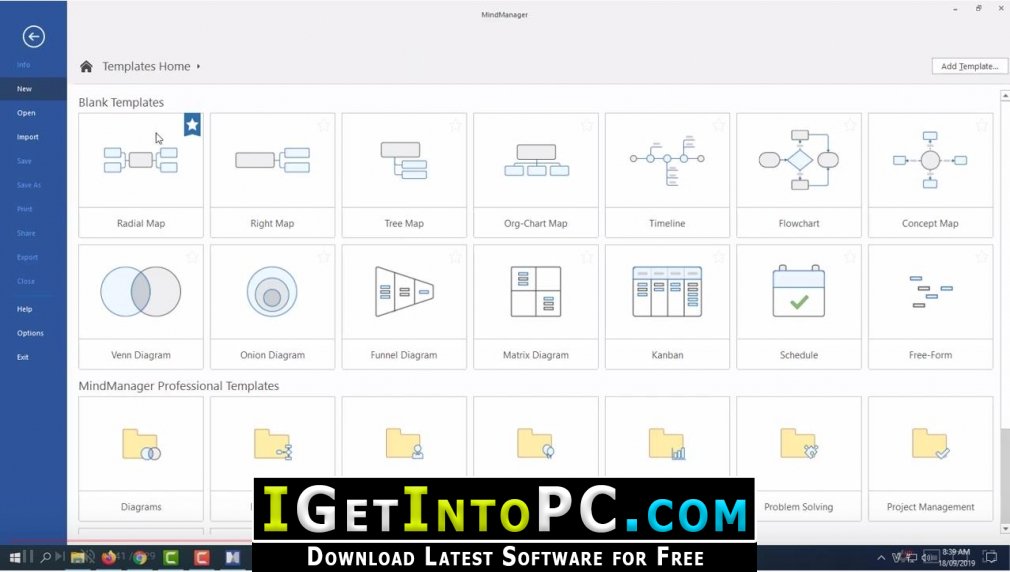

Lay out the processes for creating new products or systems.Flowchart use casesįlowcharts are so versatile, we’re confident you’ll have no trouble finding ways you, your team, and your company can use and benefit from them – especially when you need to: Now, feeling much more confident about how your customer order process is going to play out, you finish your business plan, keep your bank appointment – and get the loan you need to start cranking out t-shirts. Here is what your simple flowchart would look like: ORDER RECEIVED (process start point) > Stock picked > Payment processed > Order shipped > Delivery confirmed > CUSTOMER FOLLOW-UP (process end point) Next, using directional arrows and the appropriate flowchart symbols (in this case, ovals and rectangles), you lay these steps out in your diagram.

#Create flowchart with mindmanager 2019 series#
You start by listing the series of steps you expect to take as part of this process. Since you need to finalize this last part of your business plan before your bank loan appointment tomorrow, your friend suggests using a flowchart diagram to get a handle on your sales order workflow. Neither of you has run a business before, however, so you’re having trouble visualizing what the customer order process will look like. Let’s say you and a friend want to create, stock, and sell originally designed t-shirts. No matter how you use it, you’ll find a flowchart diagram equally effective whether it’s driving or supporting your initiative. You can also attach external data, notes, documents, and links to other maps and diagrams to flesh out your process as needed. It’s worth noting that MindManager makes it easy to add, delete, edit, and rearrange your flowchart template as you go. Use a labeled oval shape to represent the end of your process or workflow. Use diamond shapes to indicate where decisions will be required in your process – and arrowed lines to link each diamond to new or repeated steps resulting from your decisions. These steps should by represented by rectangles with brief, text-based descriptions inside. Then, with the list you just created in hand, start at your oval and use arrowed lines to link the individual steps or tasks in the proper sequence. Use a labeled oval shape to represent the starting position of your process or workflow. Step #1:Įstablish the purpose of your flowchart and list out the various steps you’ll need to include.
#Create flowchart with mindmanager 2019 how to#
Here’s how to create a flowchart diagram in 4 easy steps. Diamond shapes (indicate decision points).Rectangle shapes (indicate individual steps).Oval shapes (indicate workflow start or end points).The 3 most basic flowchart symbols include: Since the point of any flowchart is to clarify a process or flow of events, standardized symbols are the key to communicating in a “language” everyone will understand. So whether you need to highlight and explore workflow hiccups, or identify opportunities for ramping up output, it’s easy to create the diagram you need. MindManager flowcharts come in a range of shapes and sizes – from process maps to swim lane diagrams.

Decision flowcharts (aka decision tree diagrams) are just one example of how you can review failed or inadequate processes from different angles.


 0 kommentar(er)
0 kommentar(er)
